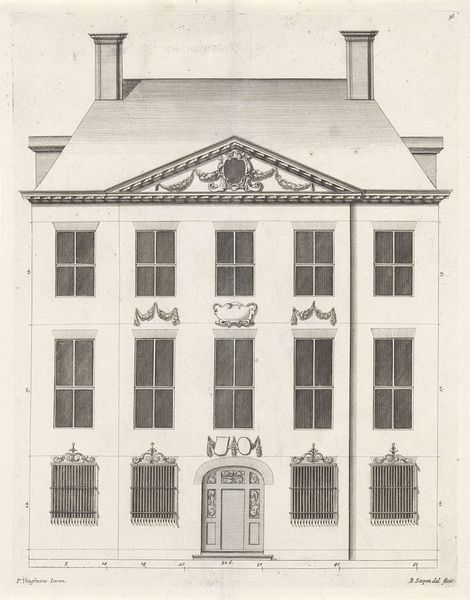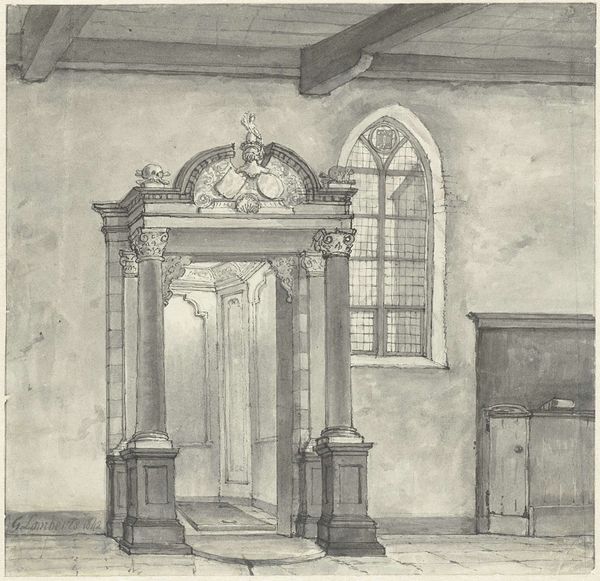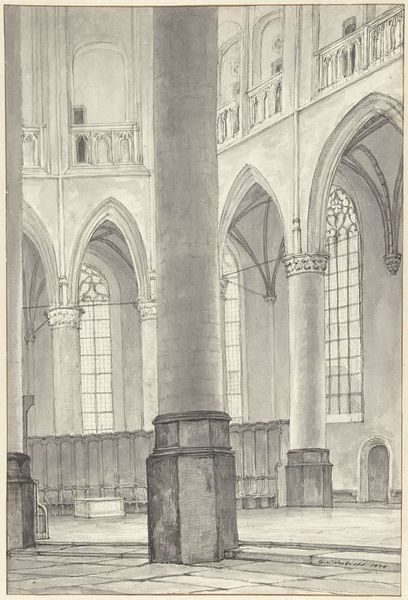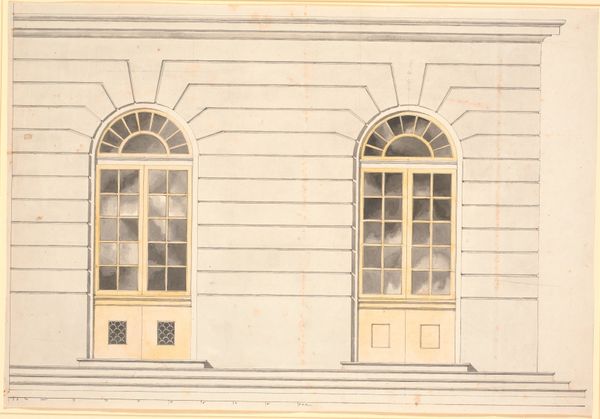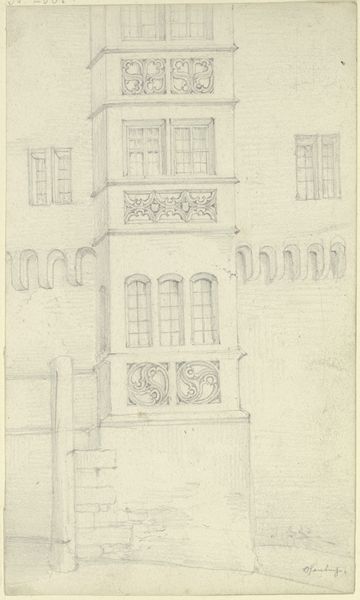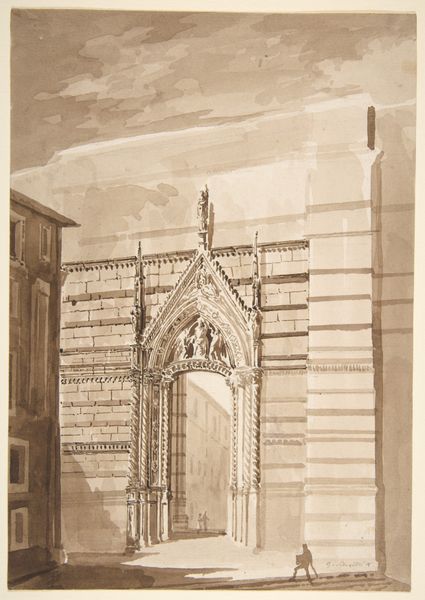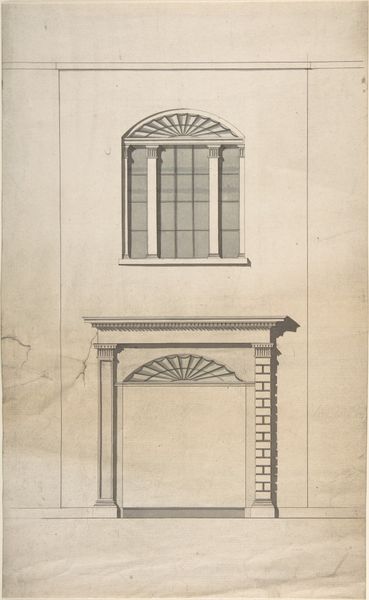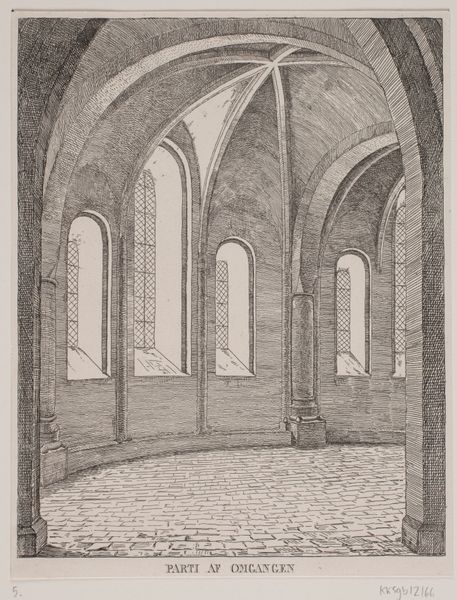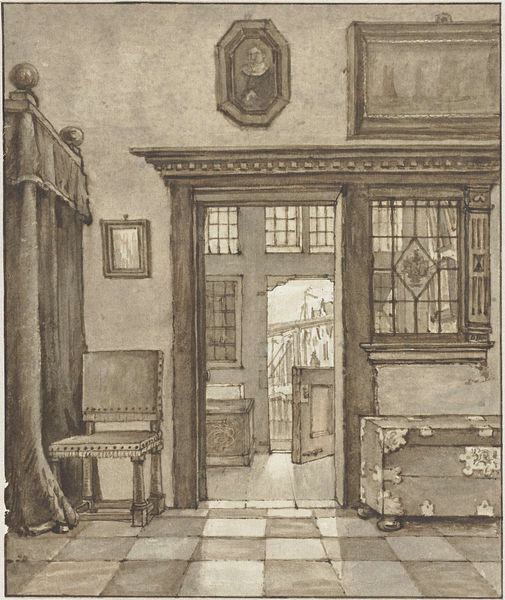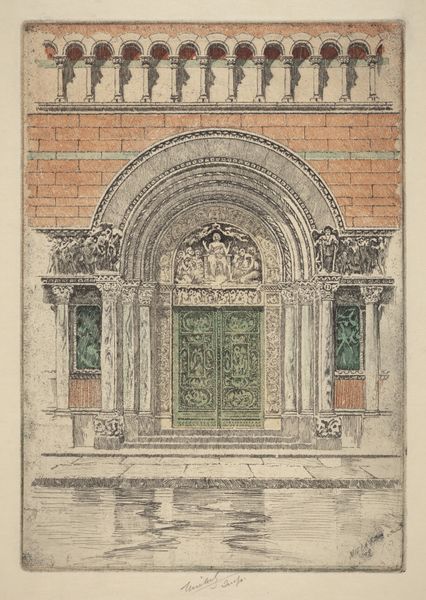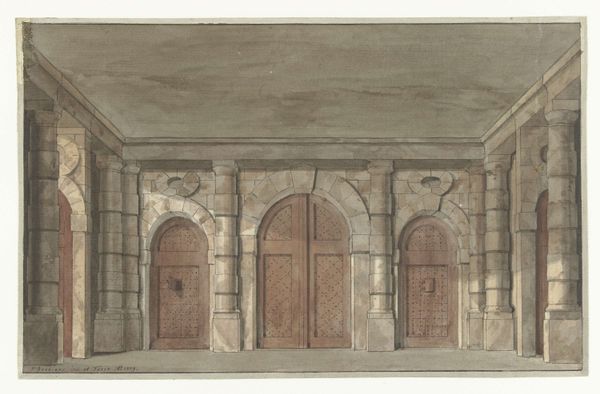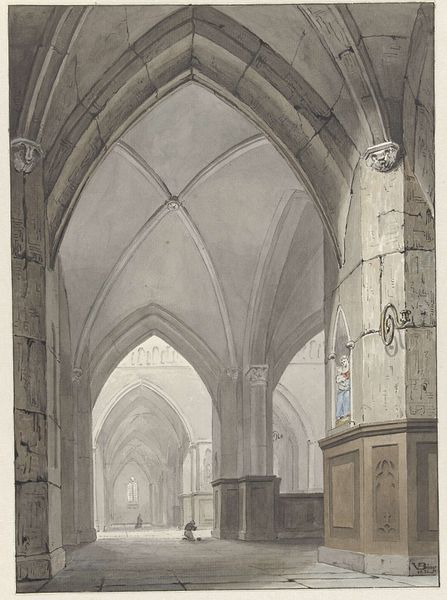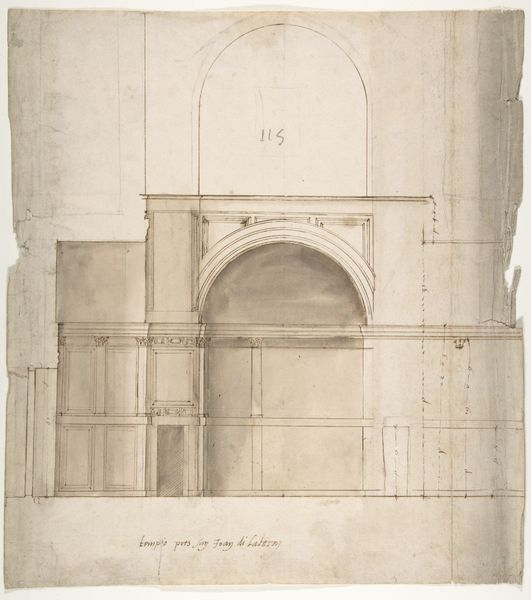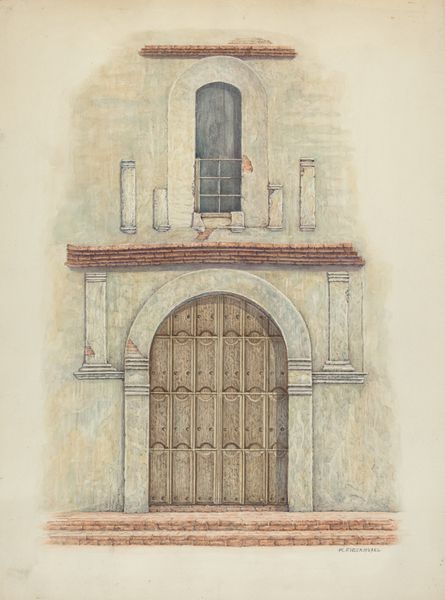
drawing, ink, architecture
#
architectural sketch
#
drawing
#
neoclacissism
#
landscape
#
ink
#
architectural drawing
#
architecture drawing
#
architecture
#
realism
Dimensions: height 170 mm, width 132 mm
Copyright: Rijks Museum: Open Domain
Gerrit Lamberts created this drawing of the tomb of J.M. Kemper in the Pieterskerk in Leiden with pen and watercolor in 1832. The Pieterskerk, originally a Catholic church, became a Protestant church after the Reformation, reflecting a significant shift in the religious and political landscape of the Netherlands. During the 19th century, memorial art became an important way for families to publicly commemorate their loved ones. The tomb's placement inside a church highlights the close relationship between religious institutions, social status, and commemoration practices. The architecture, with its large windows, columns, and arches, conveys a sense of grandeur. This may be a nod to the social standing of the deceased. The Dutch society of the time was highly stratified, with clear distinctions between the merchant class and the aristocracy. The tomb reflects these social hierarchies, suggesting that the family had the resources and social standing to commission such a memorial. By studying archival records and family histories, we can learn more about the social and economic factors that shaped the production and reception of this drawing.
Comments
No comments
Be the first to comment and join the conversation on the ultimate creative platform.
